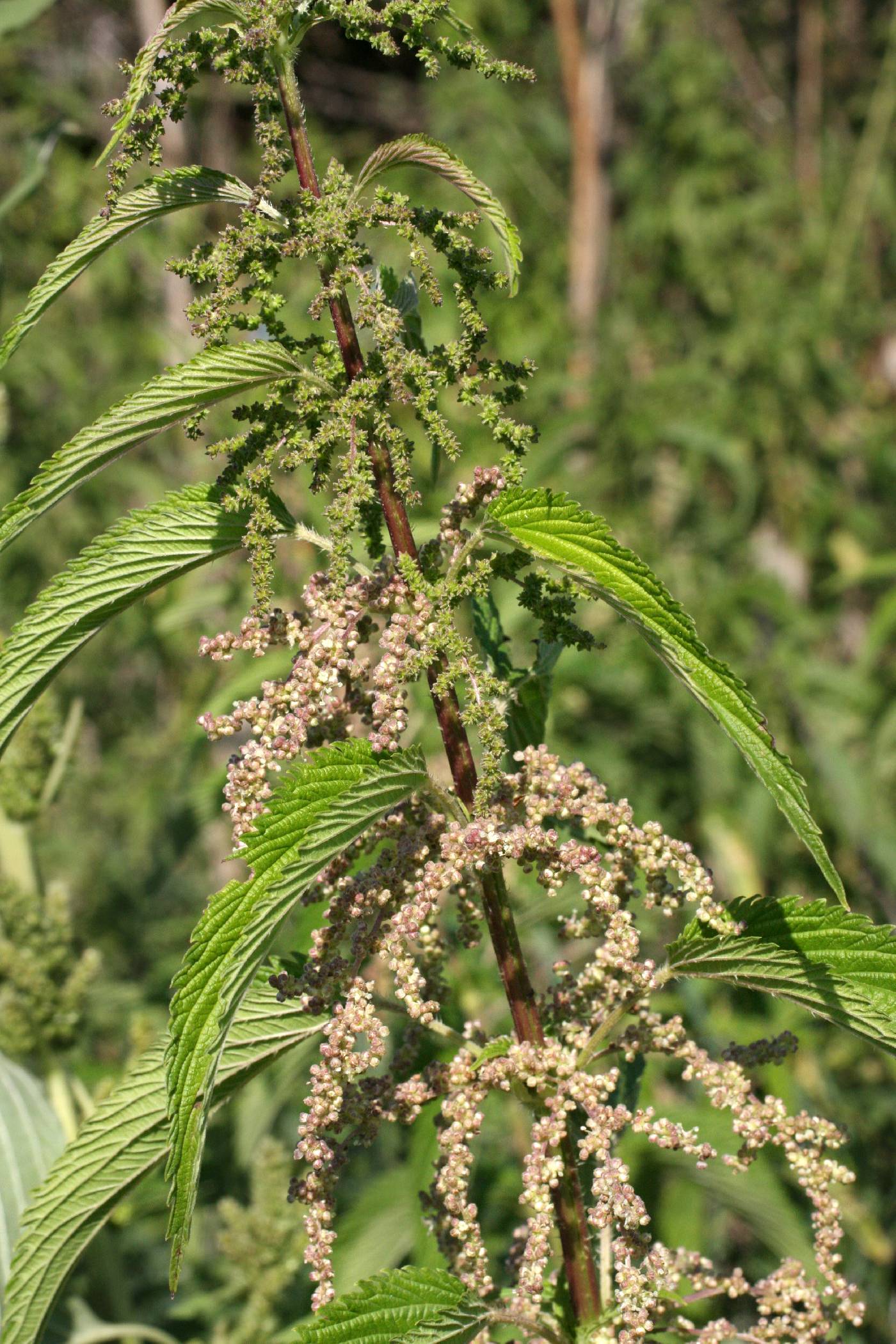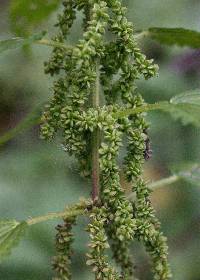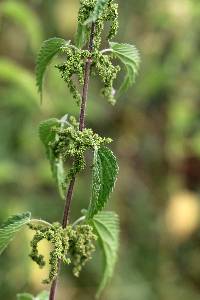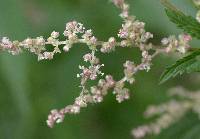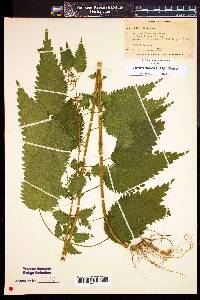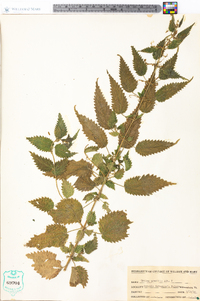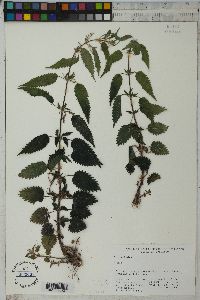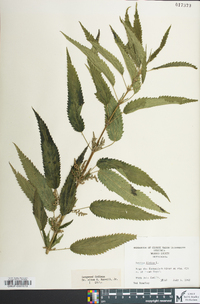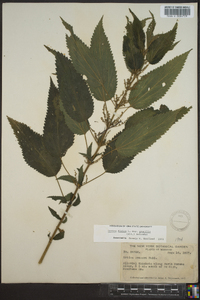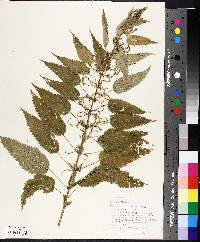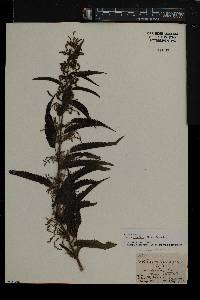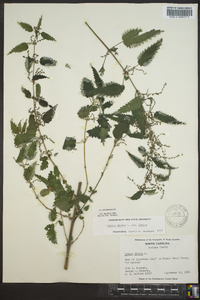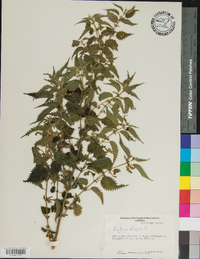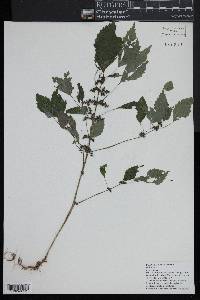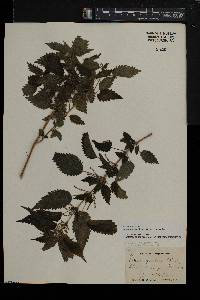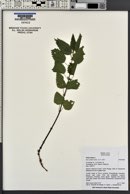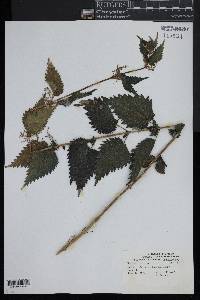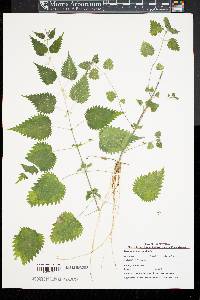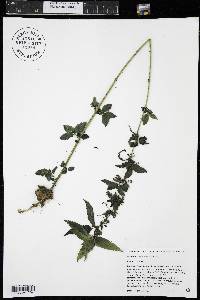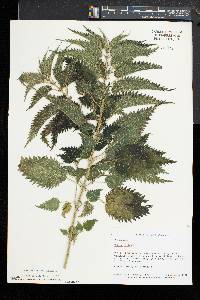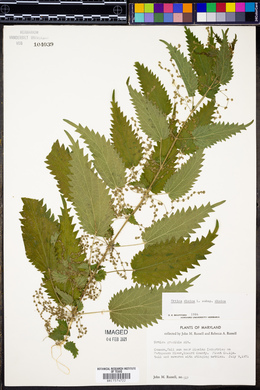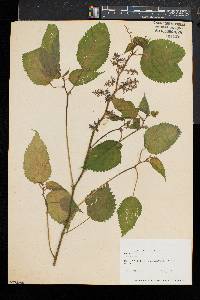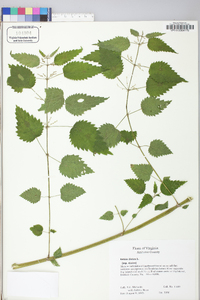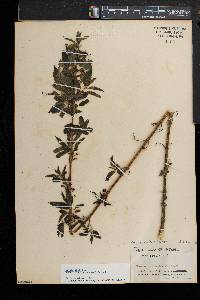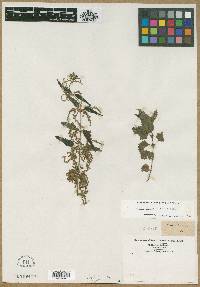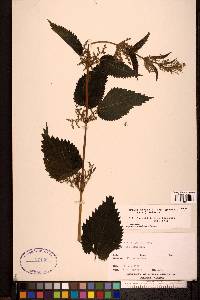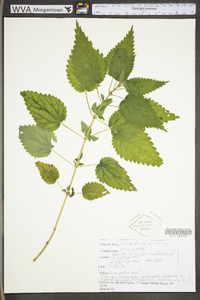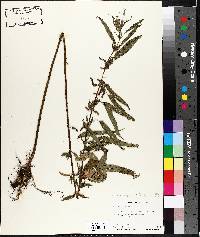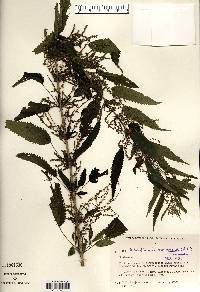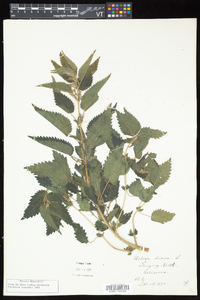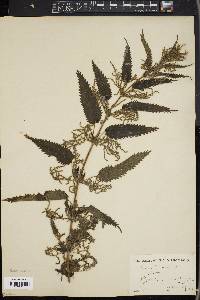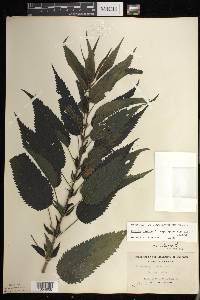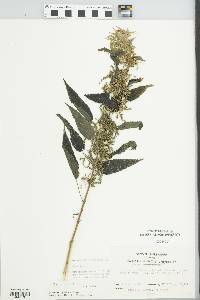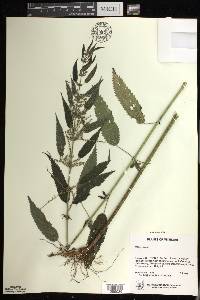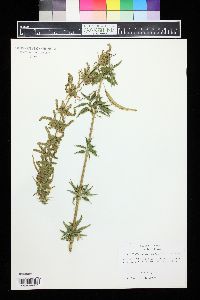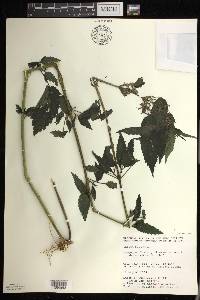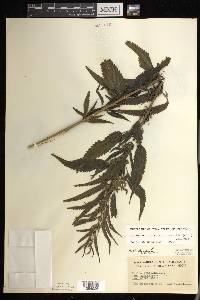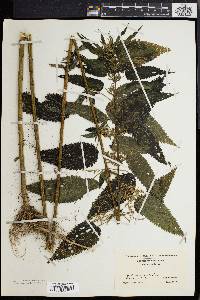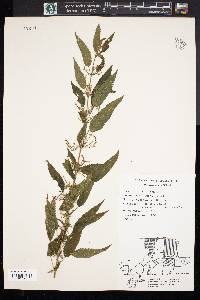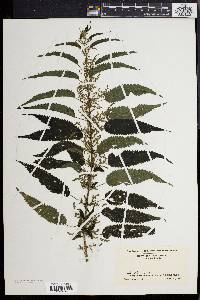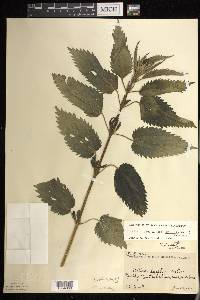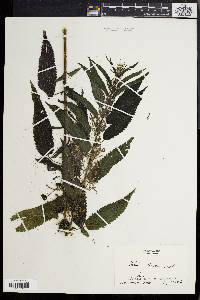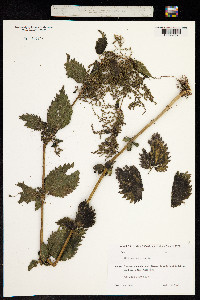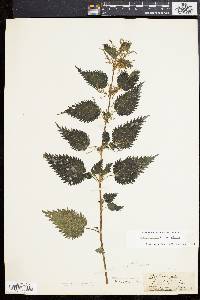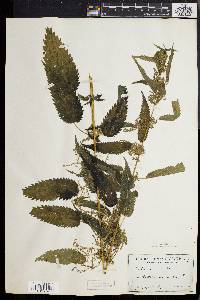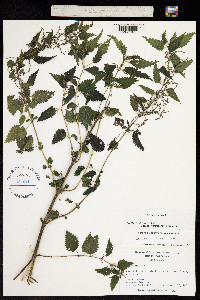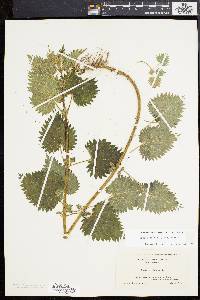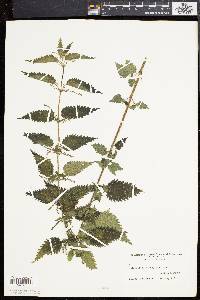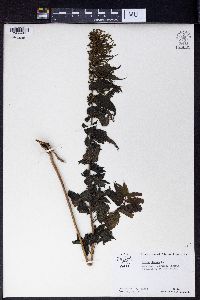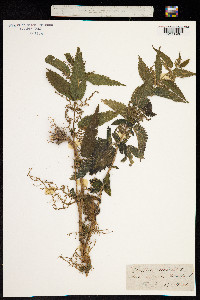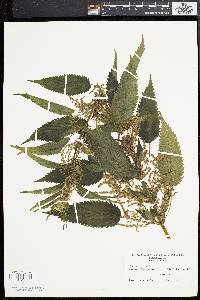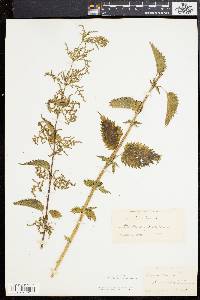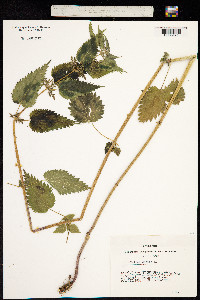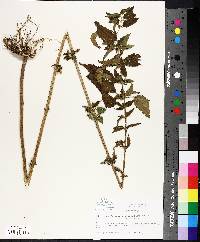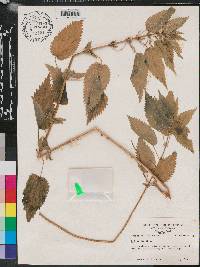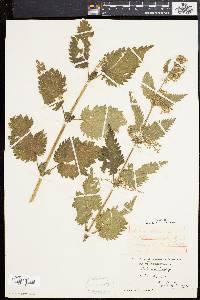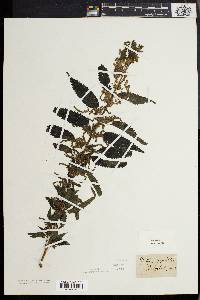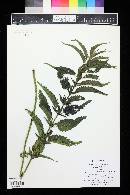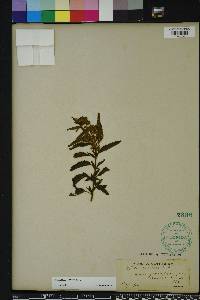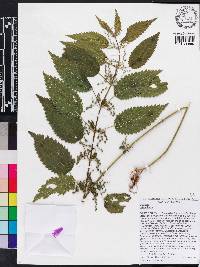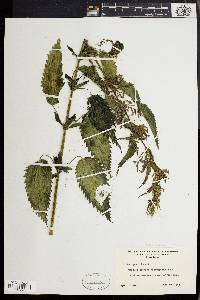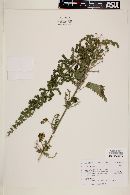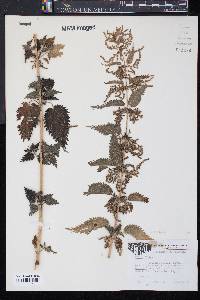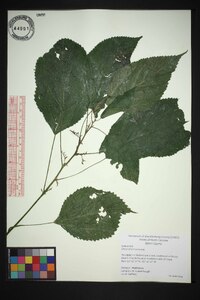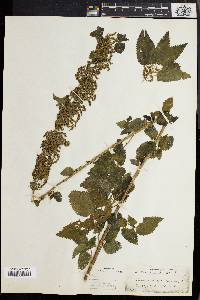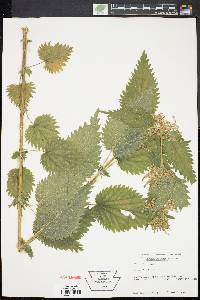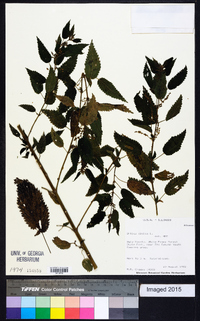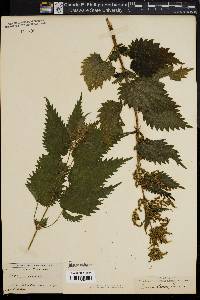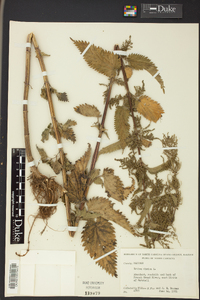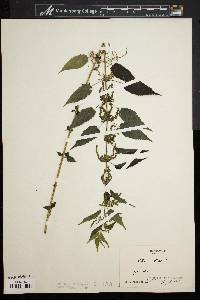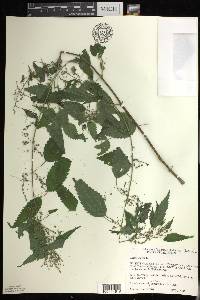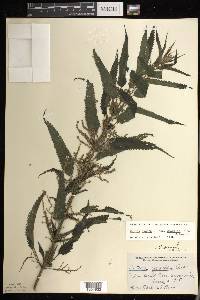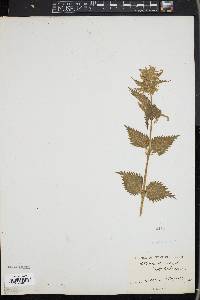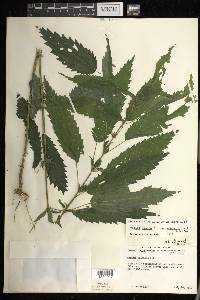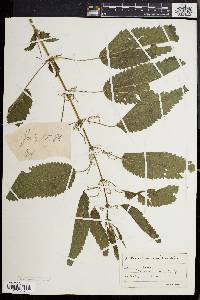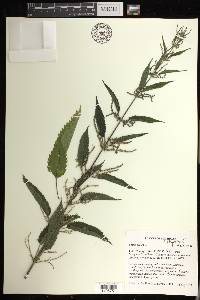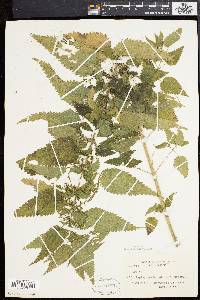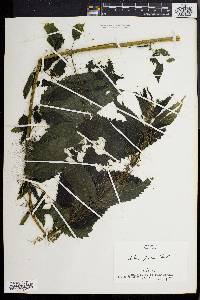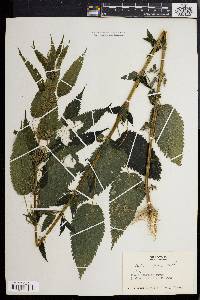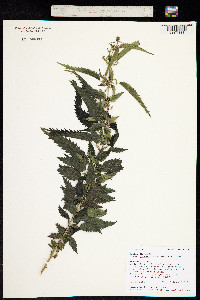
|
|
|
|
Family: Urticaceae
Stinging Nettle, more...California nettle, slender nettle, tall nettle
[Urtica dioica var. dioica] |
Herbs , perennial, rhizomatous, 5-30 dm. Stems simple or branched, erect or sprawling. Leaf blades elliptic, lanceolate, or narrowly to broadly ovate, 6-20 × 2-13 cm, base rounded to cordate, margins coarsely serrate, sometimes doubly serrate, apex acute or acuminate; cystoliths rounded. Inflorescences paniculate, pedunculate, elongate. Flowers unisexual, staminate and pistillate on same or different plants, staminate ascending, the pistillate lax or recurved. Pistillate flowers: outer tepals linear to narrowly spatulate or lanceolate, 0.8-1.2 mm, inner tepals ovate to broadly ovate, 1.4-1.8 × 1.1-1.3 mm. Achenes ovoid to broadly ovoid, 1-1.3(-1.4) × 0.7-0.9 mm. Plant: perennial herbs; Dioecious or monoecious, erect or sprawling, rhizomatous, 0.5-3 m tall Leaves: elliptic, lanceolate, narrowly to widely ovate, or cordate, the blades 5.5-20 cm long, 1.5-13 cm wide; margins coarsely or sometimes doubly serrate; apex acute or attenuate; base rounded to cordate; cystoliths punctiform INFLORESCENCE: paniculate, either staminate or pistillate, pedunculate, elongate, the staminate ascending, the pistillate lax or recurved Flowers: PISTILLATE FLOWERS with outer tepals linear to slightly spatulate, or lanceolate, 0.8-1.2 mm long; inner tepals ovate to broadly ovate, 1.4-1.8 mm long, 1.1-1.3 mm wide; STAMINATE FLOWERS with 4 equal tepals, 4 stamens, and a rudimentary, cuplike ovary Fruit: FRUITS ovoid to broadly ovoid, 1-1.3 mm long, 0.7-0.9 mm broad, flattened Misc: Alluvial woods, margins of deciduous woodlands, fencerows, waste places; late spring-summer REFERENCES: Boufford, David E. 1992. Urticaceae. Ariz.-Nev. Acad. Sci. 26(1)2. Perennial herb 0.5 - 3 m tall Stem: erect to sprawling, unbranched or branched, with both stinging and non-stinging hairs. Leaves: opposite, 6 - 20 cm long, 2 - 13 cm wide, elliptic to lance- or egg-shaped with a rounded to heart-shaped base and pointed tip, toothed, with both stinging and non-stinging hairs. Flowers: either male or female, found on the same or different plants, borne on axillary branched inflorescences, subtended by narrow triangular to lance-shaped bracts without hooked hairs. The male flowers are ascending and have four tepals and four stamens. Female flowers relaxed to recurved with four tepals, the hairless outer tepals linear to narrow spoon- to lance-shaped and 0.8 - 1.2 mm long, the inner tepals egg-shaped and 1.4 - 1.8 mm long. Fruit: an egg-shaped achene, 1 - 1.3 mm long, 0.7 - 0.9 mm wide. Similar species: Boehmeria cylindrica and Parietaria pensylvanica have flexible, non-stinging hairs, and Pilea pumila and Pilea fontana are usually hairless. Laportea canadensis has stiff, stinging hairs and flexible, non-stinging hairs like Urtica dioica, but it has alternate leaves. Urtica dioica is represented by one subspecies in the Chicago Region. See link below for further information. Etymology: Urtica is the old Latin name for stinging nettle and is derived from the word uro, meaning "to burn." Dioica means dioecious, referring to the male and female flowers growing on separate plants (although they may actually grow on the same plant). Author: The Morton Arboretum Boufford 1992, Kearney and Peebles 1969 Duration: Perennial Nativity: Non-Native Lifeform: Forb/Herb General: Erect rhizomatous perennial, 0.5-3 m tall, with stinging and non-stinging hairs. Leaves: Opposite, stipulate, the blades elliptic to lanceolate, narrowly to widely ovate or cordate, 5.5-20 cm long, 1.5-13 cm wide, margins coarsely to doubly serrate, apex acute or attenuate, base rounded to cordate, with punctiform mineral concretions known as cystolith in the epidermal cells. Flowers: Paniculate inflorescence, either staminate or pistillate, pedunculate, elongate, the staminate ascending the pistillate lax or recurved; the pistillate flowers with 2 outer tepals linear to slightly spatulate, or lanceolate, 0.8-1.2 mm long, inner 2 tepals ovate to broadly ovate, about 1.5 mm long, a little over 1 mm wide, 4 stamens and a rudimentary, cuplike ovary. Fruits: Ovoid to broadly ovoid, achene just over 1 mm long, less than 1 mm broad, flattened. Ecology: Found in moist soils to 10,000 ft (3048 m); flowers May-August. Notes: The opposite leaves, especially with the acuminate apex and serrate margins, along with the plant being covered in visible stinging hairs helps to identify this species. There are two subspecies: subsp. gracilis and subsp. holosericea. They can be told apart by the former having glabrous to strigose stems, with the undersurface of the leaves being glabrous or puberulous, while the latter has a soft hairy stem, with the undersurface of the leaves tomentose to villous. Ethnobotany: Taken for stomachache, for aches and pains, especially sore or swollen joints, taken for chest pains, rubbed on skin to keep hair from falling out, taken to induce labor, for swelling, as a strengthener and hunting medicine, stimulant, as a wellness tonic, for arthritis, eaten as a green, drunk as a tea, used to make cordage, baskets, string, and nets. This plant has genuinely extensive uses that cannot all be listed here. Etymology: Urtica is the Latin name for nettle, while dioica means dioecious. Synonyms: None Editor: SBuckley, 2010 Erect, rhizomatous perennial, usually simple, to 2 m; lvs serrate, acute or acuminate, 5-15 cm; stipules lance-linear, 5-15 mm; infls branched, many-fld, commonly exceeding the subtending petioles; fruiting cal 2 mm, pubescent; achene ovate, 1.5 mm. Nearly cosmopolitan, either as a native or an intr. sp., and highly variable. June-Sept. Var. dioica, native to Europe but well established in our range, is dioecious, weak-stemmed, and rather densely hairy, with mostly broadly ovate, cordate-based lvs with stinging hairs on both sides, and with the teeth commonly 5-6 mm deep; 2n=52. Var. procera (Muhl.) Wedd., the native phase, is usually monoecious, stouter and more sparsely hairy, with ovate to lance-oblong lvs that are seldom cordate at the base, with the stinging hairs commonly confined to the lower surface, and with the teeth averaging 2-3.5 mm deep; 2n=26 in ours. (U. gracilis; U. viridis) Gleason, Henry A. & Cronquist, Arthur J. 1991. Manual of vascular plants of northeastern United States and adjacent Canada. lxxv + 910 pp. ©The New York Botanical Garden. All rights reserved. Used by permission. |
|
|
|
This project was made possible in part by the Institute of Museum and Library Services [MG-70-19-0057-19].
Powered by Symbiota

